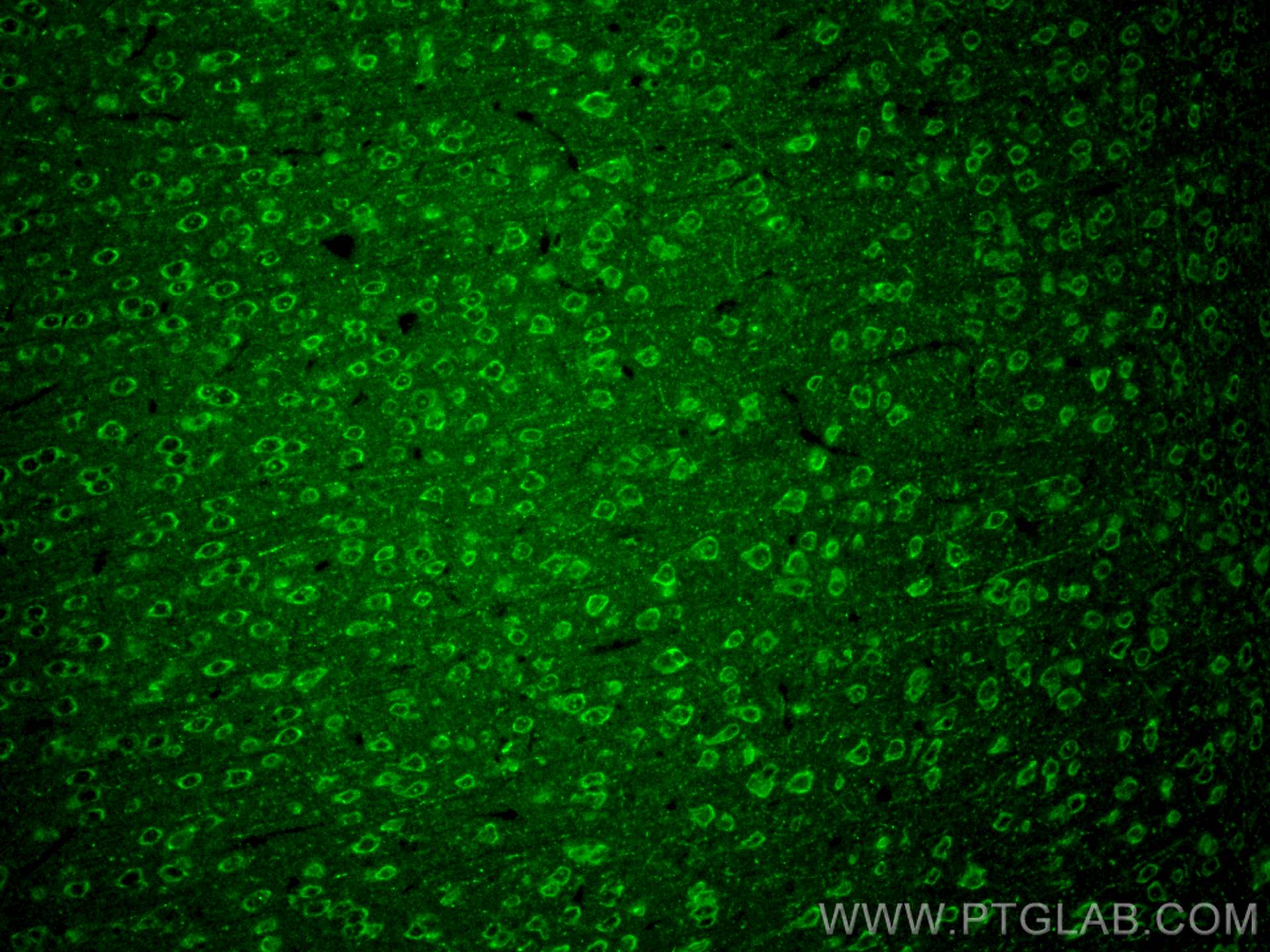Synaptotagmin-5 Polyklonaler Antikörper
Synaptotagmin-5 Polyklonal Antikörper für WB, IF-P, ELISA
Wirt / Isotyp
Kaninchen / IgG
Getestete Reaktivität
human
Anwendung
WB, IF-P, ELISA
Konjugation
Unkonjugiert
Kat-Nr. : 18124-1-AP
Synonyme
Geprüfte Anwendungen
| Erfolgreiche Detektion in WB | BxPC-3-Zellen |
| Erfolgreiche Detektion in IF-P | Maushirngewebe |
Empfohlene Verdünnung
| Anwendung | Verdünnung |
|---|---|
| Western Blot (WB) | WB : 1:500-1:2000 |
| Immunfluoreszenz (IF)-P | IF-P : 1:50-1:500 |
| It is recommended that this reagent should be titrated in each testing system to obtain optimal results. | |
| Sample-dependent, check data in validation data gallery | |
Produktinformation
18124-1-AP bindet in WB, IF-P, ELISA Synaptotagmin-5 und zeigt Reaktivität mit human
| Getestete Reaktivität | human |
| Wirt / Isotyp | Kaninchen / IgG |
| Klonalität | Polyklonal |
| Typ | Antikörper |
| Immunogen | Synaptotagmin-5 fusion protein Ag12677 |
| Vollständiger Name | synaptotagmin V |
| Berechnetes Molekulargewicht | 43 kDa |
| Beobachtetes Molekulargewicht | 42 kDa |
| GenBank-Zugangsnummer | BC046157 |
| Gene symbol | Synaptotagmin-5 |
| Gene ID (NCBI) | 6861 |
| Konjugation | Unkonjugiert |
| Form | Liquid |
| Reinigungsmethode | Antigen-Affinitätsreinigung |
| Lagerungspuffer | PBS with 0.02% sodium azide and 50% glycerol |
| Lagerungsbedingungen | Bei -20°C lagern. Nach dem Versand ein Jahr lang stabil Aliquotieren ist bei -20oC Lagerung nicht notwendig. 20ul Größen enthalten 0,1% BSA. |
Hintergrundinformationen
The synaptotagmins are integral membrane proteins of synaptic vesicles thought to serve as Ca(2+) sensors in the process of vesicular trafficking and exocytosis (PMID: 8058779). Synaptotagmin-5 (SYT5) belongs to the synaptotagmin family. Synaptotagmin-5 can function as an exocytosis regulator (PMID: 27793683) and is a protein potentially associated with the pathology of schizophrenia (PMID: 32860155).
Protokolle
| PRODUKTSPEZIFISCHE PROTOKOLLE | |
|---|---|
| WB protocol for Synaptotagmin-5 antibody 18124-1-AP | Protokoll herunterladen |
| IF protocol for Synaptotagmin-5 antibody 18124-1-AP | Protokoll herunterladen |
| STANDARD-PROTOKOLLE | |
|---|---|
| Klicken Sie hier, um unsere Standardprotokolle anzuzeigen |



